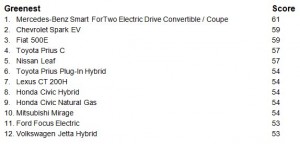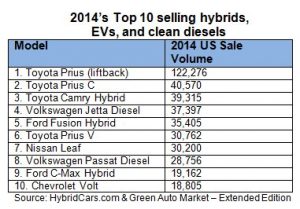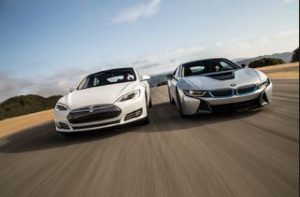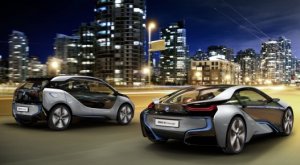by Jon LeSage, editor and publisher, Green Auto Market
Here’s my take on the 10 most significant and interesting occurrences during the past week…….
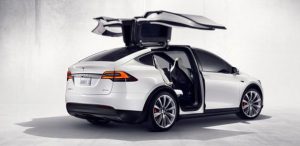 May EV and hybrid sales: The Tesla Model X has seen a huge sales increase – up a third from the previous month. Consumer Reports did feature a critical review in print and video, focused mainly on concerns with the falcon doors and too many bells and whistles versus practical features. That was released last week, so we’ll have to check on June sales to see if it’s having an impact. The Model S is seeing some decline in sales month-over-month and year-over-year. The Ford Fusion Energi is doing well in sales, and is getting closer to the Fusion Hybrid in overall sales numbers. The Ford C-Max Energi continues to soften in sales. Overall battery electric and plug-in hybrid electric vehicle sales were flat from April, and were up 5.5% over May 2015. Hybrid sales as a share of total U.S. new vehicle sales increased slightly – up to 2% of the total share after it had been hovering below the 2% mark for several months. Since it was debuted in January 2015, the Toyota RAV4 Hybrid has become a hot seller. Now at No. 2 in the rankings, it came in at No. 9 during the month of December 2015 with 1,430 units sold that month. The hybrid version was debuted a few months after Toyota halted production of the low-selling all-electric RAV4.
May EV and hybrid sales: The Tesla Model X has seen a huge sales increase – up a third from the previous month. Consumer Reports did feature a critical review in print and video, focused mainly on concerns with the falcon doors and too many bells and whistles versus practical features. That was released last week, so we’ll have to check on June sales to see if it’s having an impact. The Model S is seeing some decline in sales month-over-month and year-over-year. The Ford Fusion Energi is doing well in sales, and is getting closer to the Fusion Hybrid in overall sales numbers. The Ford C-Max Energi continues to soften in sales. Overall battery electric and plug-in hybrid electric vehicle sales were flat from April, and were up 5.5% over May 2015. Hybrid sales as a share of total U.S. new vehicle sales increased slightly – up to 2% of the total share after it had been hovering below the 2% mark for several months. Since it was debuted in January 2015, the Toyota RAV4 Hybrid has become a hot seller. Now at No. 2 in the rankings, it came in at No. 9 during the month of December 2015 with 1,430 units sold that month. The hybrid version was debuted a few months after Toyota halted production of the low-selling all-electric RAV4.- BMW switching to autonomous cars: BMW announced that it’s slowing down in its EV development and wouldn’t be developing another fully-electric i model until 2021. BMW is moving over to development of autonomous vehicles and artificial intelligence. While being a “fantastic car,” the BMW i3 isn’t as popular as BMW had hoped, so the automaker is switching some of its focus over to self-driving vehicles – which is becoming the next “technological race,” according to the BMW blog.
- Building EV market: The 29th International Electric Vehicle Symposium (EVS29) & Exposition has announced new forums dedicated to market building discussion. The Market Builders’ Forums will gather public and private industry innovators to discuss their strategies for growing the electric drive market and will include an opportunity for audience Q&A. Forum 1 will be moderated by Robert Graham, Director, EV Everywhere Challenge for the U.S. Dept. of Energy; panelists will include Britta Gross, Director, Adv. Vehicle Commercialization Policy at General Motors; Robert Langford, Manager, Electric Vehicle Sales at American Honda Motor Company; Brendan Jones, Vice President, East Region at NRG EVgo; and Laura Renger, Principal Manager, Air & Climate at Southern California Edison. Forum 2 will be moderated by Lisa Jerram, Senior Research Analyst at Navigant Consulting; panelists will include Aaron Cohen, General Manager, Electric Vehicle Strategy at Audi of America; Colleen Quinn, Vice President, Gov’t Market Development and Public Policy at ChargePoint; Marco Vivivani, Director, Development and Public Relations at Communauto; and CC Chan, Professor, Academician, Fellow at University of Hong Kong, EVAAP, WEVA and others. Register now and gain access to the entire electric drive value chain under one roof.
- Uber, Lyft, and Walmart: Ridesharing firms Uber and Lyft are adding to their list of services by working with Walmart for grocery shopping and delivery. Walmart will start with delivery tests through Uber in Phoenix and Lyft in Denver, which should start within the next two weeks. Walmart is testing another grocery service through its Sam’s Club stores. The pilot project started in March with delivery of general merchandise and grocery for business members in Miami.
- DOE funding: The S. Dept. of Energy (DOE) announced that $22 million is now available to support research, development, and demonstration of innovative plug-in electric vehicle (PEV) and direct injection propane engine technologies; as well as community-based projects to accelerate the adoption of light, medium, and heavy duty vehicles that operate on fuels such as biodiesel, electricity, E85, hydrogen, natural gas, and propane.
- EV charging in San Diego: San Diego Gas & Electric (SDG&E) is supporting development of the electric vehicle charging infrastructure through a $45 million pilot program for the installation of electric-car charging stations; and through investing $7.5 million over the next five years in an education campaign to promote electric cars. The project will include installation of 3,500 charging stations at 350 locations, including businesses and apartment complexes. Of that total, 10% will be installed in disadvantaged communities, SDG&E said.
- Winner of EcoCAR3: Ohio State University has won EcoCAR3 once again. Along with winning the latest round, OSU won EcoCAR3 last year and won the final EcoCAR2 the previous year. OSU’s Series Parallel PHEV 2016 Chevrolet Camaro was the first to officially meet all safety protocols. The team of students achieved the goals in just a few short months after receiving the car, to winning the competition. Sixteen university teams each reworked a 2016 Camaro for the competition. EcoCAR3, run by the U.S. Department of Energy and sponsored by General Motors, works to further the reality of the vision and development of eco-friendly vehicles while maintaining power and performance.
- Santa Monica buses running on RNG: Clean Energy Fuels Corp. announced that the City of Santa Monica has awarded Clean Energy a multiyear liquefied natural gas (LNG) contract to fuel its Big Blue Bus (BBB) fleet of vehicles. The 5-year deal, worth an estimated $3 million per year, will enable BBB to continue using Clean Energy’s Redeem™ brand of renewable natural gas (RNG), rated up to 90% cleaner than diesel and considered the cleanest transportation fuel available. BBB began using Redeem by Clean Energy in January 2015.
- VW settlement in Germany: Germany’s motor vehicle authority KBA on June 3 approved proposed fixes for the three models with 2.0-liter diesel engines from the EA 189 diesel engine family, VW said. The automaker received regulatory approval for technical fixes to its Passat, CC, and Eos models. VW can now recall more than 800,000 of the 8.5 million cars in Europe affected by its emissions scandal.
- Smart city mobility: Navigant Research is presenting a webinar on June 14 at 2:00 p.m. EDT, “Changing Models for Urban Mobility – Examining New Transportation Options in the Smart City.” Vehicles are becoming more connected and autonomous, and more reliant on digital technologies. Electric vehicles are also becoming more widely available and affordable. At the same time, governments are pushing for increasing emissions reductions and cities are increasingly regulating private car usage. All these factors will work together to change how people move around in the smart city. In this webinar, Lisa Jerram, principal research analyst at Navigant Research, Eric Woods, research director at Navigant Research, and David Alexander, senior research analyst at Navigant Research, will discuss the dynamics surrounding this shift in transportation strategy.


